wikiHow is a “wiki,” similar to Wikipedia, which means that many of our articles are co-written by multiple authors. To create this article, 17 people, some anonymous, worked to edit and improve it over time.
wikiHow marks an article as reader-approved once it receives enough positive feedback. In this case, 91% of readers who voted found the article helpful, earning it our reader-approved status.
This article has been viewed 256,090 times.
Learn more...
A dance belt is a kind of specialized undergarment commonly worn by active males, mainly ballet and other dancers but also figure skaters, trapeze artists, actors, and equestrians. The belt helps to support the male genitals and prevent testicular injury, while also creating a smooth and neat aesthetic look for performances. Dance belts are quite comfortable to wear when properly sized, fitted, and worn-in.
Steps
Choosing a Dance Belt
-
1Decide on the style. Most dance belts are similar in design to thong underwear. However, unlike thongs, dance belts have a thicker waistband so the flesh at the waist is not pinched in and the fabric is much sturdier. The middle back of the waistband is connected by a narrow piece of elasticized fabric that is strapped to the bottom of the front triangular panel which provides coverage of and support to the male genitalia. This narrow strip of fabric passes between the wearer's legs and fits in between the two buttocks, both for support and smooth appearance of the major gluteal muscles or bum cheeks. This is sometimes described as a T-back design. Some dance belts are made with a full seat rather than with a single T-strap.
- The "T-back" or thong design is the most popular style of dance belt for several reasons. First, these belts don't betray underwear lines. Second, they don't cover your buttocks, so the glutes and hamstring muscles aren't restricted from extended to full strength. Third, because the thong style doesn't cover any muscles, it will not move around if you do rapid or vigorous movements; rather, the tension and tight fit of the belt and thong back stay in place. Lastly, if you're a serious performer, like a ballet dancer, for example, you'll probably likely find yourself performing in white tights someday and you'll need to wear a thong style dance belt. In other words, get used to the belt now![1]
- Some manufacturers produce full seat or "comfort" compromise dance belts. These types are, however, less aesthetically pleasing as they often show underwear lines.[2]
- Athletic supporters or jock straps also provide active males with support. Unlike the dance belt, these supporters have a pair of elasticized straps that meet the bottom of triangular fabric at the front. They pass between the legs and encircle the thighs just below and on each side of the buttocks. Again, these straps tend to be visible when wearing form-fitting tights, whereas dance belts avoid these lines by eliminating the jockstrap’s rear pair of straps and replacing them with a single thong Strap.[3]
-
2Decide on the color. In general, the go-to and most popular color is flesh-colored, or 'nude' if you are non-dark skinned. They can be dyed darker colours to better match skin tones. The same dance belt can then be worn under black practice tights or white performance tights. In fact, a beige or flesh tone dance belt is more invisible under white tights than a white one.[4]
- Dance belts are also produced in white and black.
- The colour and the finish of the fabric used for making tights affects the appearance of the person wearing them. Light-colored tights, such as white, light grey, yellow, light blue, and taupe, can make the shape and contours of a man's genital bulge more distinctive than other darker colors because of the way bright stage lights create shadows and highlights so contrast. Darker tights, on the other hand, are generally less revealing as contours are more subdued with lower contrast, especially if more of a flat or matte rather than shiny finish, since shiny surfaces reflect more light striking raised surface contours.
-
3Decide on the size. Dance belts are measured by waist size. Although most dance stores don't carry a very wide selection of men's dancewear, most should have a small section of men's tights and dance belts.
- Even though dance belts are a specific product for men, dance clothing manufacturers have not standardized small - medium - large waist sizes.
-
4Decide if you prefer a front panel that is padded. Most dance belts have two thin layers of stretchy fabric for the triangular panel, while some styles also incorporate a thin layer of triangular padded material. [5]
- The front triangular support pouch can be constructed simply of a couple of layers of spandex or similar fabric. But you can also buy dance belts with a thin layer of light, non-bulky padding material incorporated in order to effect an even more smoothed, discreet bulge.
Putting on a Dance Belt
-
1Make sure you have ample time. When putting on a dance belt, take as much time as you need to get all your parts placed where you want and as comfortable as possible. Once the belt is on, nothing is supposed to move until you take it off.[6]
-
2Remove all your clothes in the dressing or change room. You'll probably want to have privacy for this.
-
3Grab the dance belt and hold it facing forward. You will know it's facing forward because the "V"-shaped cloth is in front of you, while the string is closest to your genitals.
-
4Step into your dance belt. Do this as you would if putting on a pair of underpants, one leg at a time. The right leg should be on the right side of the belt and your left should be on the left side.
-
5Pull your dance belt up around your waist or hips. Pull it up to the height at which you wear your pants. Do not wear it low with the goal of keeping the thong part loose; this will only cause trouble down the line.[7]
-
6Adjust your genitals. Your penis is supposed to end up facing upwards, towards your abdomen. And you can quickly accomplish this by reaching your slightly curved palm of your hand down inside the dance belt to scoop up your scrotum upwards inside the supportive pouch, guiding all of the hanging parts to point towards 12 o'clock as you withdraw your hand while the fabric panel hugs and securely yet gently cradles and supports everything in place. Your two testicles will be up in front, not dangling between your legs, as they would unsupported once your body temperature rises due to all the physical exertion of dancing and the body's normal need to keep the testicular temperature from overheating. If the thong part feels overly tight, you can adjust by pulling it slightly lower, but there has to be some tension in order for there to be any support to the male anatomy. [8]
- When properly positioned within the garment, the genitals are held closely and firmly to the lower torso in a raised orientation (in other words, pointing towards 12 o'clock). This is in contrast to most athletic supporters, which typically leave the genitalia hanging downwards so that if you jump there is a bounce.
- If anything feels uncomfortable, adjust it now. You won't be able to do this later especially if you are wearing n elaborate costume that covers your lower torso.
- At first, you can expect to sense some unfamiliar pressure in your nether region, but if the device is of a proper fit you will quickly not notice you're wearing one after a few hours total of getting the hang of using it. You'll eventually come to appreciate the ability to jump, leap, and move without any concern for soreness or discomfort. [9]
-
7Make sure the thong is seated between your buttocks as comfortably as possible. Adjust the height of the waistband so that it sits even with or slightly over the crest or top of your hip bones. The thong strip should have a good bit of tension otherwise the device will not act as a good shock absorber when jumping (e.g. ballet changements and sautes).
- The thong should never fit loosely underneath. It may feel more comfortable when worn loosely, but it will not provide effective, reliable support to the genitalia in that case and defeats the main purpose of wearing a dance support belt in the first place.
-
8Pull on your tights and the other parts of your costume. Make sure you feel comfortable before leaving the change room. You want to feel confident, comfortable and well supported before you begin your dance, skate, or other activity. If your tights or whatever you're wearing has a seam running down the center middle of your lower torso, adjust it so the seam line is balanced evenly left and right side to side.
- In performances, particularly ballet, readjusting the belt or costume is considered bad form when the audience can see this. This is why you should take care accordingly to get all of the adjustments right before you head out on stage.[10]
Community Q&A
-
QuestionCan male ballet dancers do pointe?
 wikiHow Staff EditorThis answer was written by one of our trained team of researchers who validated it for accuracy and comprehensiveness.
wikiHow Staff EditorThis answer was written by one of our trained team of researchers who validated it for accuracy and comprehensiveness.
Staff Answer wikiHow Staff EditorStaff AnswerTraditionally, male ballet dancers do not go en pointe. However, there are exceptions, such as when playing a female character in a pantomime or comedy routine, or when dancing as a character like Puck. Moreover, traditions are changing, with progressive dance companies enabling both men and women dancers to make a choice as to wearing pointe shoes or not. It must be noted that the lack of ongoing training en pointe can make it harder for male dancers but again, some ballet schools now have an expectation that male dancers will learn pointe work too, especially since it helps train good balance techniques and helps every dancer appreciate the harsh toll that dancing en pointe extracts.
wikiHow Staff EditorStaff AnswerTraditionally, male ballet dancers do not go en pointe. However, there are exceptions, such as when playing a female character in a pantomime or comedy routine, or when dancing as a character like Puck. Moreover, traditions are changing, with progressive dance companies enabling both men and women dancers to make a choice as to wearing pointe shoes or not. It must be noted that the lack of ongoing training en pointe can make it harder for male dancers but again, some ballet schools now have an expectation that male dancers will learn pointe work too, especially since it helps train good balance techniques and helps every dancer appreciate the harsh toll that dancing en pointe extracts. -
QuestionWhat is the proper attire for a male ballerina?
 wikiHow Staff EditorThis answer was written by one of our trained team of researchers who validated it for accuracy and comprehensiveness.
wikiHow Staff EditorThis answer was written by one of our trained team of researchers who validated it for accuracy and comprehensiveness.
Staff Answer wikiHow Staff EditorStaff AnswerThe basic attire for a male ballet dancer doing class work is generally: Footed or footless black tights, a dance belt underneath the tights, a form-fitting plain white t-shirt, white crew or ankle socks (with a little padding if possible) and black ballet shoes. Some items may differ depending on which school you’re attending and the temperature where you are dancing (for example, shorts or singlets may be allowed sometimes) and the items will be different for actual costumed performances. For more advice, check out this wikiHow: How to Dress for a Ballet Class as a Man.
wikiHow Staff EditorStaff AnswerThe basic attire for a male ballet dancer doing class work is generally: Footed or footless black tights, a dance belt underneath the tights, a form-fitting plain white t-shirt, white crew or ankle socks (with a little padding if possible) and black ballet shoes. Some items may differ depending on which school you’re attending and the temperature where you are dancing (for example, shorts or singlets may be allowed sometimes) and the items will be different for actual costumed performances. For more advice, check out this wikiHow: How to Dress for a Ballet Class as a Man. -
QuestionDo male ballet dancers wear a cup?
 wikiHow Staff EditorThis answer was written by one of our trained team of researchers who validated it for accuracy and comprehensiveness.
wikiHow Staff EditorThis answer was written by one of our trained team of researchers who validated it for accuracy and comprehensiveness.
Staff Answer wikiHow Staff EditorStaff AnswerYes, male ballet dancers wear a dance belt, which some people refer to as a cup. This belt provides support and slight protection for the male genitalia but mostly it streamlines the appearance of the male anatomy for costume purposes.
wikiHow Staff EditorStaff AnswerYes, male ballet dancers wear a dance belt, which some people refer to as a cup. This belt provides support and slight protection for the male genitalia but mostly it streamlines the appearance of the male anatomy for costume purposes.
References
- ↑ http://www.dancebelt.info/17165091C1D94631B10E/the-complete-guide-to-dance.html
- ↑ http://www.dancebelt.info/17165091C1D94631B10E/the-complete-guide-to-dance.html
- ↑ http://www.dancebelt.info/17165091C1D94631B10E/the-complete-guide-to-dance.html
- ↑ http://www.dance.net/topic/3887430/1/Guys-Only-PG-13/Everything-you-need-to-know-about-Dance-Belts.html
- ↑ http://www.dance.net/topic/3887430/1/Guys-Only-PG-13/Everything-you-need-to-know-about-Dance-Belts.html
- ↑ http://www.dance.net/topic/3887430/1/Guys-Only-PG-13/Everything-you-need-to-know-about-Dance-Belts.html
- ↑ http://www.dance.net/topic/3887430/1/Guys-Only-PG-13/Everything-you-need-to-know-about-Dance-Belts.html
- ↑ http://www.dance.net/topic/3887430/1/Guys-Only-PG-13/Everything-you-need-to-know-about-Dance-Belts.html
- ↑ http://www.dance.net/topic/3887430/1/Guys-Only-PG-13/Everything-you-need-to-know-about-Dance-Belts.html
About This Article
To wear a dance belt, start by taking of all your clothes. Then, hold the belt so it faces forward, with the string closest to you. Step into the belt and pull it on like a normal pair of underwear. Once you’ve pulled the belt up, adjust your genitals so your scrotum is inside the supportive pouch and your penis is facing upwards, which will stop them moving around while you dance. If the belt feels tight, pull it slightly lower. You should also make sure the thong is comfortably between your buttocks. When you’re happy with the position of your dance belt, pull on your tights and the rest of your costume, and get ready to dance! For more tips, including how to choose a suitable dance belt, read on!


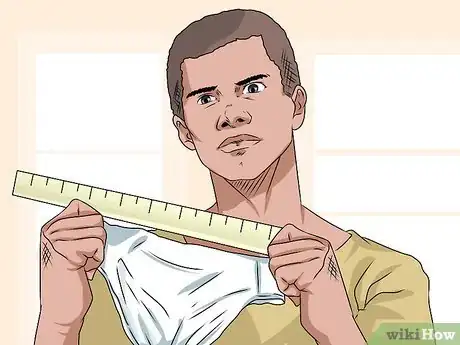
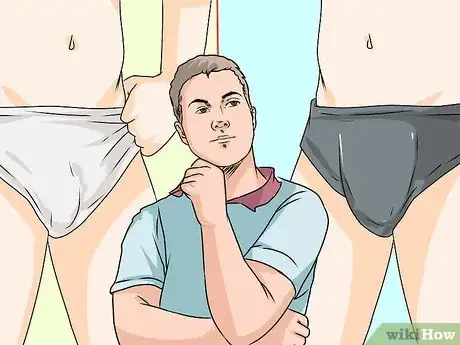
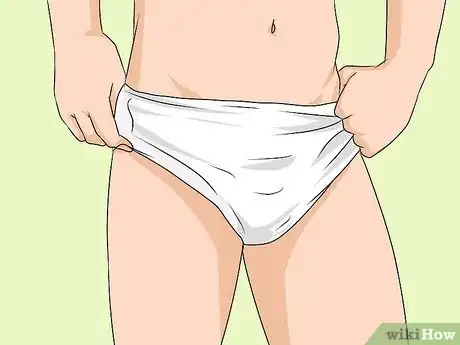
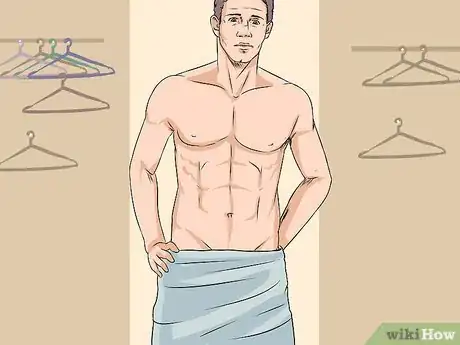
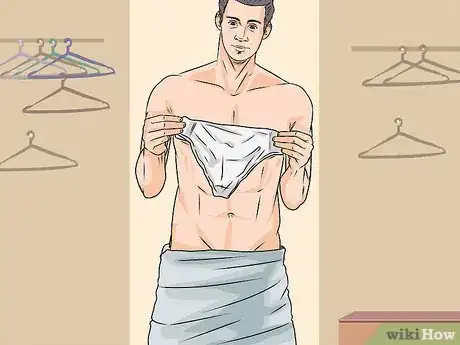
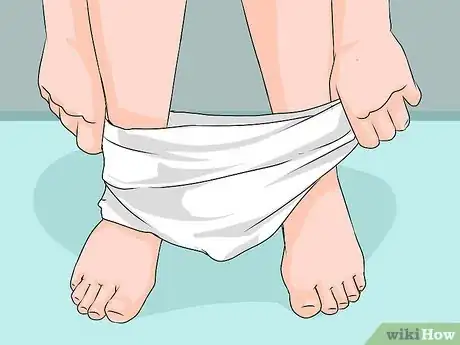
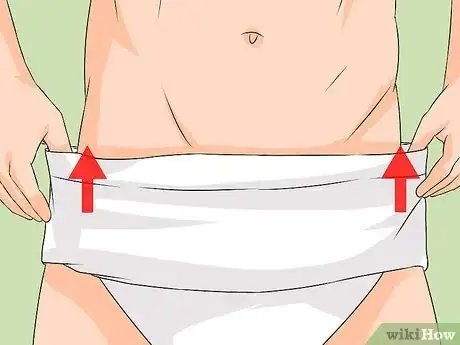
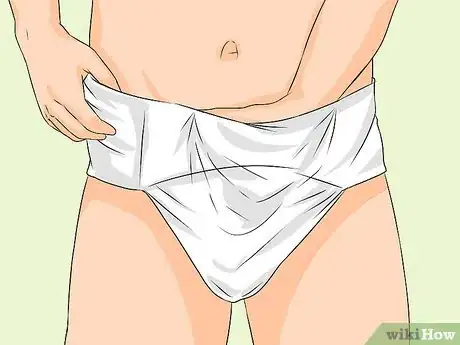
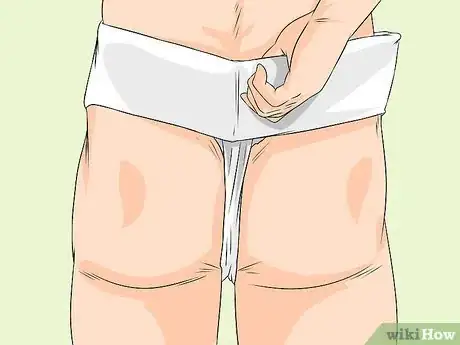
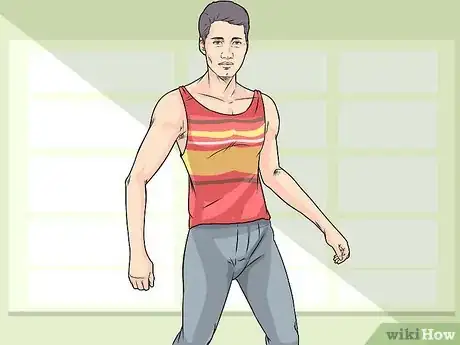
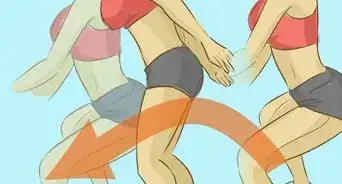

-Step-19-Version-2.webp)


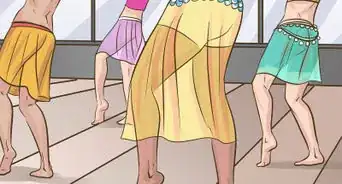
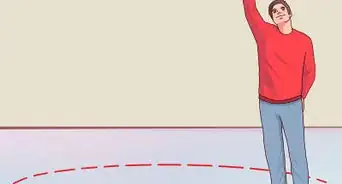


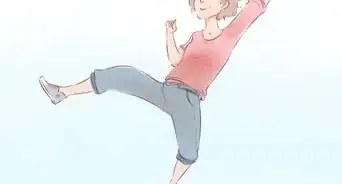
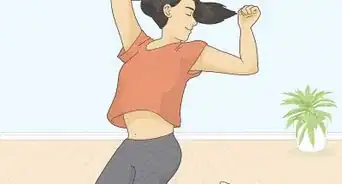











-Step-19-Version-2.webp)




































